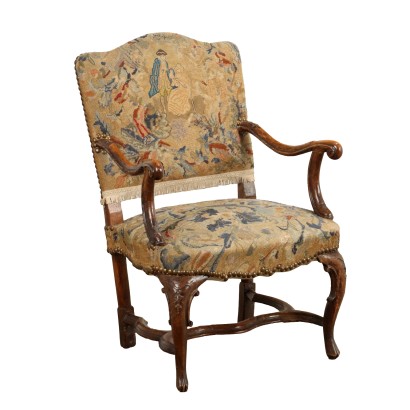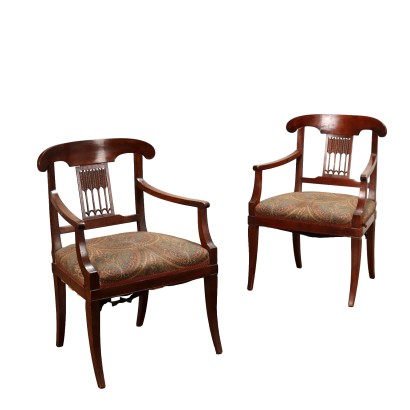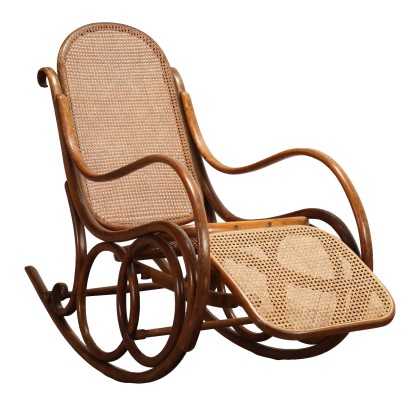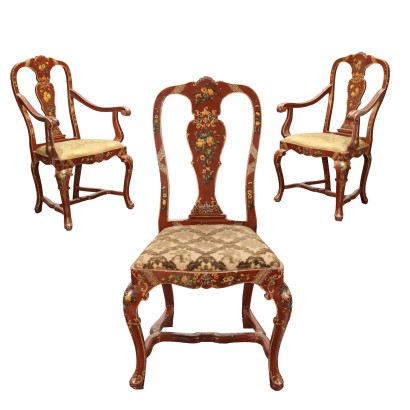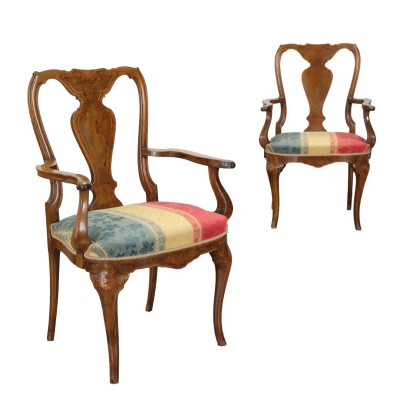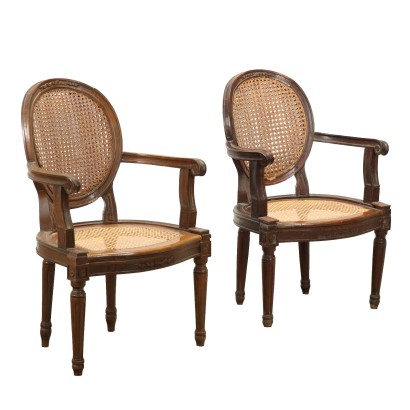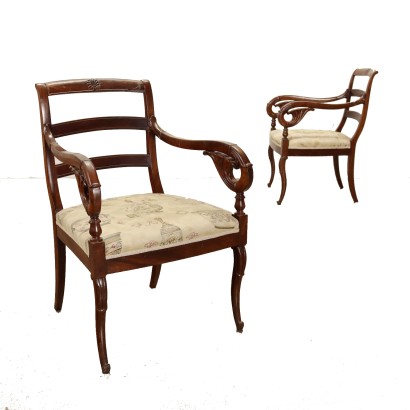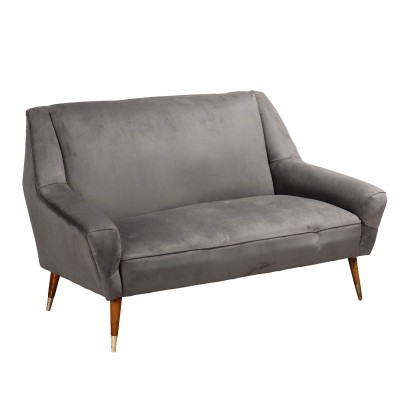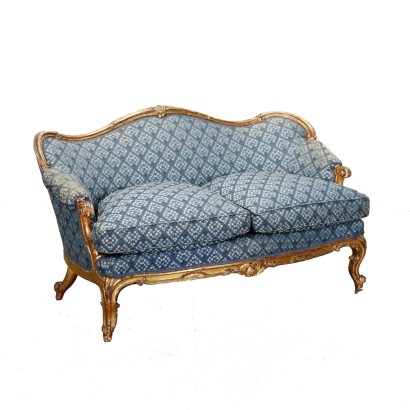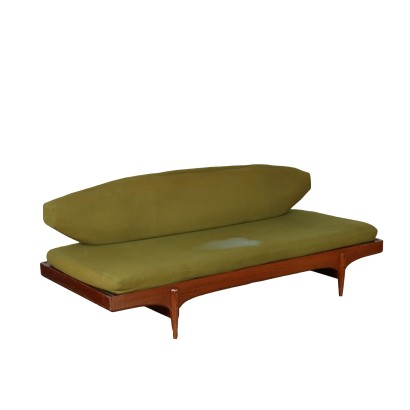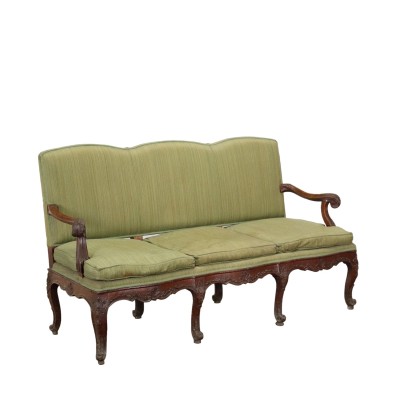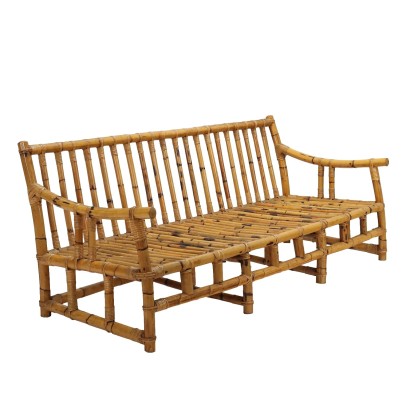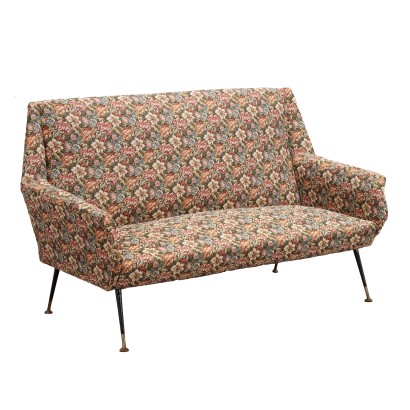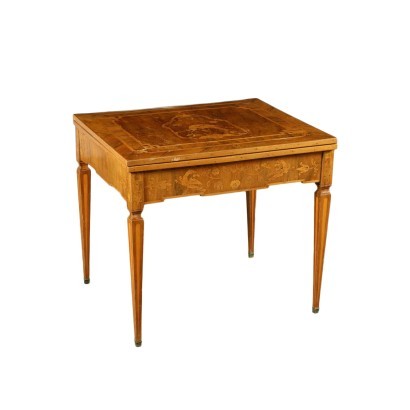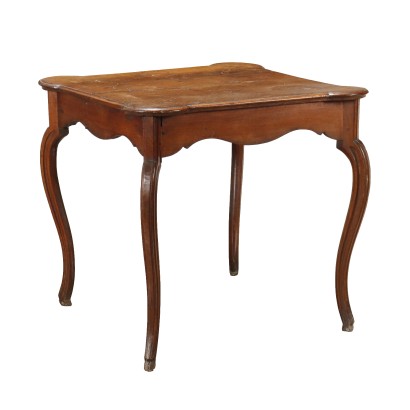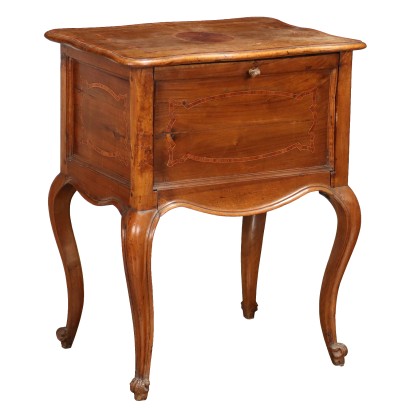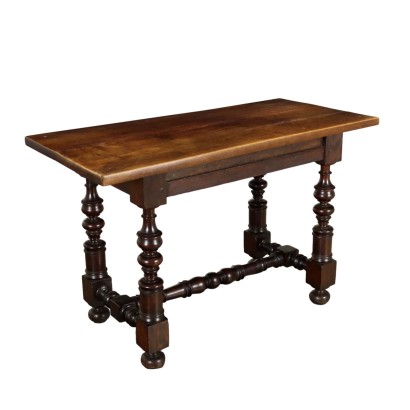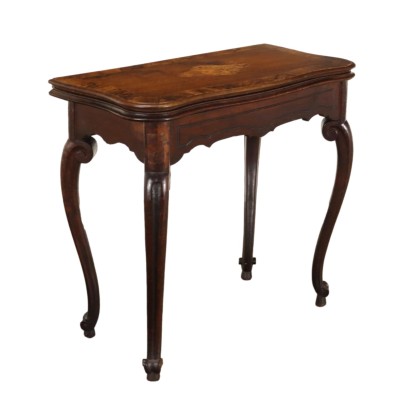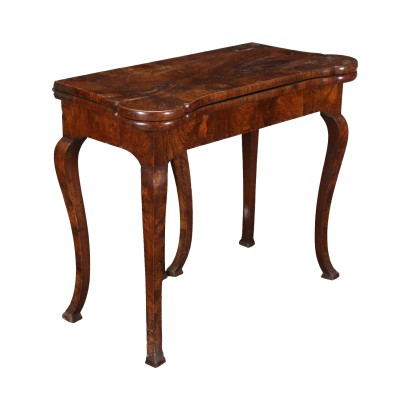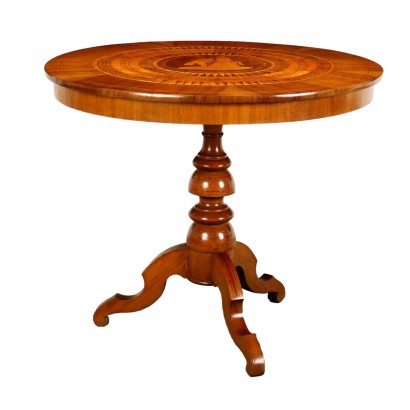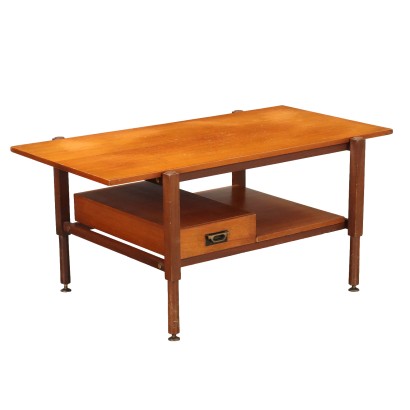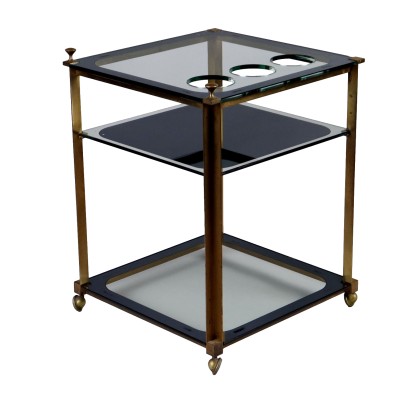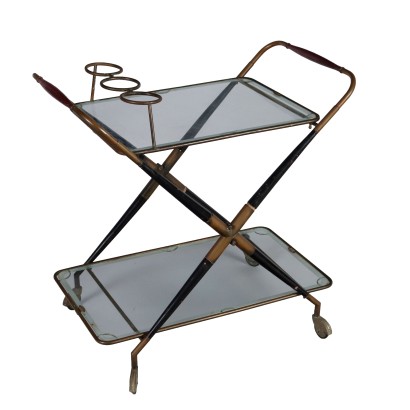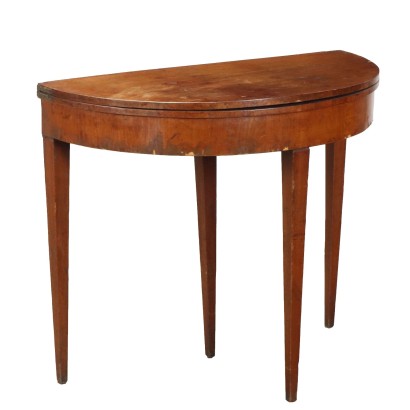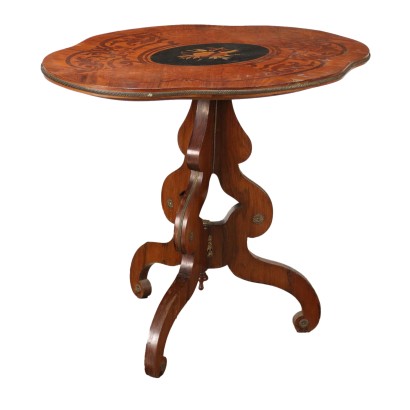Antique Baroque Armchair Walnut Foam Italy XVIII Century - Venice, Mid XVIII Century
Features
Venice, Mid XVIII Century
Style: Barocchetto (1720-1770)
Age: 18th Century / 1701 - 1800
Origin: Veneto, Italy
Main essence: Walnut
Description
Baroque armchair supported by legs of which the front ones are moved and carved with characteristic motifs, and are connected by an "H" crosspiece which is also moved. In walnut, the seat and raised backrest are padded and lined with half-stitch tapestry, decorated with floral motifs and a gallant scene.
Product Condition:
Product which due to age and wear requires restoration and re-polishing. We try to present the real state of the furniture as completely as possible with photos. If some details are not clear from the photos, what is stated in the description applies.
Dimensions (cm):
Height: 100
Width: 98
Depth: 69
Seat height: 50
Additional Information
Style: Barocchetto (1720-1770)
With this term we designate, for what specifically relates to furniture, a part of the production carried out in Italy in the period of time between the Rococo era and the first phase of neoclassicism.It is characterized by the formal and decorative structure still rigidly adhering to the dictates dear to the Baroque period (hence the term baroque) and to the Louis XIV fashions and yet the new times are captured in the adoption of smaller volumes, more decorative modules. elegant, often directly inspired by French fashion, but always executed with rigorous principles of ornamental symmetry.
The tendency to assimilate formal and volumetric novelties but not to incorporate their ornamental elaboration finds natural explanation in Italy in the fact that in this century the great aristocracy experienced an unstoppable political and economic decline.
If in the previous century there was a great profusion of furnishings destined to adorn newly built homes, to proudly show the power of the client family, in the eighteenth century they rather take care to update the building with only the furniture strictly necessary for the new needs imposed by fashion or functional needs.
The old scenographic apparatus is maintained and the new must not contrast too much.
Find out more about the Barocchetto with our insights:
Classic Monday: discovering Barocchetto
Classic Monday: between Baroque and Barocchetto
Classic Monday elegant and unusual with two Barocchetto balustrades
FineArt: Pair of Barocchetto chairs, Venice
Emilian canterano first quarter XVIII century, first Barocchetto
Ribalta a urn, Milan mid-18th
Age: 18th Century / 1701 - 1800
18th Century / 1701 - 1800Main essence: Walnut
Walnut wood comes from the plant whose botanical name is juglans regia , probably originally from the East but very common in Europe. Light or dark brown in color, it is a hard wood with a beautiful grain, widely used in antique furniture. It was the main essence in Italy throughout the Renaissance and later had a good diffusion in Europe, especially in England, until the advent of mahogany. It was used for solid wood furniture and sometimes carvings and inlays, its only big limitation is that it suffers a lot from woodworm. In France it was widely used more than anything else in the provinces. In the second half of the eighteenth century its use decreased significantly because mahogany and other exotic woods were preferred.Other customers have searched:
Poltrona, seggiolone, trono, poltrona antica, poltrona da ufficio, bergère ..
Dai un'occhiata anche ai nostri approfondimenti sul blog e alle presentazioni di FineArt:
Leggi di più
La poltrona Bergère: trasformazioni di un intramontabile classico
Dici relax e pensi poltrona
Breve storia della sedia, dall'Antico Egitto alla produzione in serie
Seggiolone, Roma XVII secolo
E dai un'occhiata anche alle poltrone tra gli arredi di design
Poltrone Delfino, Erberto Carboni per Arflex
Poltrona 'Fiorenza', Franco Albini per Arflex
Poltrona Regent, Marco Zanuso per Arflex
Poltrone Delfino, Erberto Carboni per Arflex
Poltrona '806' Carlo De Carli per Cassina
Sull'antiquariato in generale dai un'occhiata anche a:
Classic Monday: da un pezzo dei nostri magazzini alla storia dell'antiquariato
L'antiquariato dalla A alla Z: il Dizionario dell'Antiquariato
Il dizionario dell'antiquariato - Lastronatura
Il dizionario dell'antiquariato - Mascherone
Il dizionario dell'antiquariato - Natura morta
Il dizionario dell'antiquariato - Opificio
Il dizionario dell'antiquariato - Pastiglia
Il dizionario dell'antiquariato - Savonarola
Il dizionario dell'antiquariato - Rosone
Intaglio barocco con motivo a ricciolo
Leggi di più
La poltrona Bergère: trasformazioni di un intramontabile classicoDici relax e pensi poltrona
Breve storia della sedia, dall'Antico Egitto alla produzione in serie
Seggiolone, Roma XVII secolo
E dai un'occhiata anche alle poltrone tra gli arredi di design
Poltrone Delfino, Erberto Carboni per Arflex
Poltrona 'Fiorenza', Franco Albini per Arflex
Poltrona Regent, Marco Zanuso per Arflex
Poltrone Delfino, Erberto Carboni per Arflex
Poltrona '806' Carlo De Carli per Cassina
Sull'antiquariato in generale dai un'occhiata anche a:
Classic Monday: da un pezzo dei nostri magazzini alla storia dell'antiquariato
L'antiquariato dalla A alla Z: il Dizionario dell'Antiquariato
Il dizionario dell'antiquariato - Lastronatura
Il dizionario dell'antiquariato - Mascherone
Il dizionario dell'antiquariato - Natura morta
Il dizionario dell'antiquariato - Opificio
Il dizionario dell'antiquariato - Pastiglia
Il dizionario dell'antiquariato - Savonarola
Il dizionario dell'antiquariato - Rosone
Intaglio barocco con motivo a ricciolo
Product availability
The product can be seen at Cambiago
Immediate availability
Ready for delivery within 2 working days from ordering the product.



